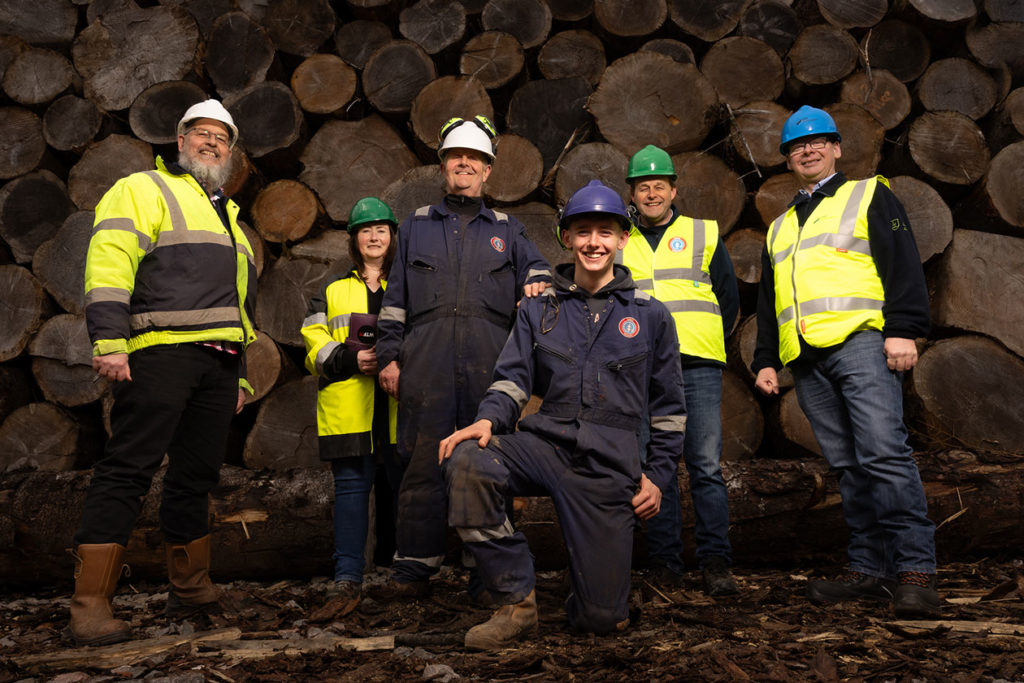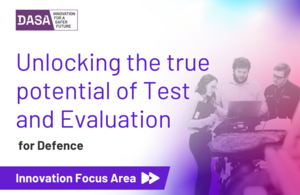With the need for culture organisations to diversify and expand their skills more acute than ever, Culture & Business Scotland have unveiled a series of training opportunities and events designed to help the nation’s creative professionals equip themselves with new knowledge.
The charity, which works to facilitate mutually beneficial connections between the culture and business sectors, will host a series of upcoming events giving organisations well-rounded education in a range of subjects including fundraising through storytelling, legacy giving and the principles of board membership.
Next week, a short course on board membership taking place on Tuesday 4th June will give new trustees and board members access to two informative, hands-on sessions introducing them to their new roles and responsibilities.
On Tuesday 4th and Tuesday 11th June two sessions will explore the five stages of the copywriting process, while additional training courses will help participants to deeper their understanding of corporate sponsorship and discover the benefits and possibilities of legacy giving campaigns.
Along with full-length courses, Culture & Business Scotland run a series of Insights Webinars designed to empower individuals and organisations in the culture sector with knowledge and expertise from industry experts, and networking events, allowing attendees the chance to connect and collaborate with like-minded professionals in the culture sector.
David Watt, Chief Executive of Culture & Business Scotland said: ‘Our programme of events is designed to help both members and non-members to expand their skillsets and knowledge and empower them to feel confident in all aspects of their work. Thanks to expert guidance and structured, practical sessions, participants will gain a solid foundation in skills that are crucial in the evolving landscape of Scotland’s culture environment’.
Individuals and organisations interested in attending an event can find further information here: https://www.cultureandbusiness.scot/training-events/
Farr North Community Development Trust and Caithness Chamber of Commerce have teamed up to reach out to businesses in the northern Highlands to raise awareness of opportunities for receiving support when hiring apprentices.
The Farr North Apprenticeship Scheme is managed by the Trust and is supported by a grant of around £100,000 from the SSE Renewables Strathy North Community Fund. The scheme offers eligible businesses up to £15,000 over a three-year period towards the costs associated with employing and training an apprentice. In some cases this can be combined with the Caithness Business Fund to bring the overall level of support to over £24,000.

Apprenticeships provide a cost-effective way to upskill and expand the workforce. Taking on an apprentice can be a smart investment, benefiting both the business and the local skills base. But as a business in the north, where do you begin?
A good place to start would be Caithness Chamber of Commerce. The Chamber offers a huge range of help and advice to businesses across the north (not just in Caithness!) and they have links and contacts with agencies that could help you. Through this network the Chamber can help you to decide if an apprenticeship would be right for your business, help to identify suitable training opportunities for your apprentice and help you find the right person for your company.
Find out more on about The Farr North Apprenticeship Scheme on the Caithness Business Fund website.
David Shearer, SSE Renewables Community Investment Manager commented:
“Investing in young people is a particular focus for our community funds and we have a number of apprenticeship programmes available in Sutherland. The apprenticeship programmes ensure that there are viable employment opportunities to retain young people in the local area and also helps to ensure that the local economy benefits from thriving local businesses.”
Simon Lee, Manager of Farr North Community Development Trust commented:
“Farr North is working to develop vibrant and resilient communities. We are delighted to be able to work with the other SSE apprenticeship programmes in Sutherland and working with Caithness Chamber of Commerce brings even more opportunities to support local businesses, develop workforce skills, and encourage our young people to stay in the area.”
CASE STUDY
GMG Energy and Finlay Mackay Modern Engineering Apprentice.
Nestling in the Strath of the river Halladale, GMG Energy is an ambitious timber processing company established by Malcolm Morrison in 2016.
Finlay began his apprenticeship with the company in 2022 whilst studying at the Engineering Maintenance framework at UHI. He is now working towards his SVQ3 work-based qualification. Malcolm is delighted with his apprentice:
“He’s a bright kid, learns quickly and is a great asset to the company.” He enthused recently.
Finlay is equally enthusiastic about the experience:
“I feel I’ve really landed on my feet. GMG Energy has given me a huge range of opportunities to apply the knowledge I get from college. I’m gaining experience, I’m learning and I’m earning! What could be better?”
Businesses in the region have opportunities to thrive by investing wisely, upskilling their workforce, and embracing apprenticeships. It’s heartening to see the positive impact on both businesses and individuals
The Defence and Security Accelerator (DASA) is pleased to launch a new Themed Competition called Delivering Operational Advantage via Improved Self-Sufficiency and Operational Energy Innovation. This competition is funded by the UK Ministry of Defence Chief Scientific Advisor (CSA).
We are seeking proposals for novel technologies that will enable defence to achieve greater self-sufficiency and operational endurance for a deployed force, allowing the force to be more resilient, agile and self-sustaining.
There are seven challenge areas to be addressed through this competition:
1. Food – feeding the winning edge
2. Water – harvest and recycle water with increasing efficiency
3. Materiel – reducing the supply chain burden
4. Waste – trash into treasure
5. Platform Power & Energy – enduring energy
6. Platform Thermal Management – keeping cool for persistent power
7. Deployed Power & Energy – energy fuels persistence
Recent military campaigns have shown that contested logistics can severely hinder operations and compromise combat effectiveness. Identifying and adopting holistic, efficient and effective support and sustainability solutions quickly is essential to ensure the resilience of defence. Do you have an innovation that could help?
In short:
- DASA has launched a new Themed Competition: Delivering Operational Advantage via Improved Self-Sufficiency and Operational Energy Innovation
- Funded by the Ministry of Defence (MOD) Chief Scientific Advisor
- Total funding available is £3.1 million (excluding VAT)
- Competition closes 12:00 midday 2 July 2024 (BST)
Learn more and submit a proposal
The Defence and Security Accelerator (DASA) is pleased to launch a new Themed Competition called Protecting Physical Assets from UAS Attack. This competition is jointly funded by the National Protective Security Authority (NPSA), the UK Home Office and the Defence Science and Technology Laboratory (Dstl).
We are seeking proposals that can provide a defensive solution for physical assets as a countermeasure to an Uncrewed Aerial System (UAS) kinetic attack.
The current Counter-UAS (C-UAS) technology market focuses on targeting the UAS in flight. This competition aims to move away from conventional C-UAS methods and instead explores the most effective ways to provide physical protection to various assets from hostile UAS. This includes options for hardening the asset, providing blanket last-ditch defence and deploying automated alerts for incoming hostile UAS.
In short:
- DASA has launched a new Themed Competition: Protecting Physical Assets from UAS Attack
- Funded by the National Protective Security Authority (NPSA), the UK Home Office and the Defence Science and Technology Laboratory (Dstl)
- Total funding available is £750,000 (excluding VAT)
- Competition closes midday 13 June 2024 (BST)
Learn more and submit a proposal
The Defence and Security Accelerator (DASA) is pleased to launch a new IFA called Unlocking the True Potential of Test and Evaluation for Defence, run on behalf of the Ministry of Defence (MOD).
DASA is seeking innovations for priority T&E issues for which no solution is currently known across the domain.
We would like to see novel proposals that:
- Accelerate the assurance of new systems and technologies
- Attune systems to the latest threats, emerging programme requirements and likely operating environments, for example by using digital tools and methods
- Enable capability to be more available to the war fighter, more quickly, more often and for longer. For example, mobile T&E infrastructure (taking the test to the capability rather than the capability to the test) allowing for rapid (re)assessment and assurance
- Enable agility by creating better understanding of the capability through innovative T&E methods and delivery
- Enable accelerated acceptance of the capability at test, by developing the novel T&E methods and processes with key regulations/ regulators (for example the Defence Safety Authority) in mind and enabling better understanding of risks and mitigations
In Short:
- DASA has launched a new Innovation Focus Area (IFA) called Unlocking the True Potential of Test and Evaluation (T&E) for Defence
- Funding provided by the Ministry of Defence (MOD)
- Suggested project values of between £50,000 and £200,000 (ex VAT) with a maximum of £500,000 (ex VAT) per financial year
- This IFA will be open for a minimum of two cycles
Learn more and submit a proposal
Focus North is delighted to announce the first round of its Net Zero Accelerator programme. With the support of NRS Dounreay, Focus North can offer 15 fully-funded places to small and medium enterprises in Caithness and north Sutherland.
Outcomes include:
- 12 months dedicated 1:1 help and support
- UK Government (SECR) carbon accreditation
- Audited carbon accounts
- Credible SECR Carbon Reduction Plan (CRP)
- Membership of the Focus North Net Zero Accelerator
About the Accelerator
Focus North has commissioned award-winning social enterprise Net Zero Nation to deliver this Accelerator for our region.
Thanks to the support of NRS Dounreay, we are able to offer this programme free of charge to local businesses.
The first cohort is now open for applications, and we are looking for 15 businesses representing a variety of sectors, business types and sizes. Collaboration across the cohort is a valuable part of the programme, and we look forward to seeing what businesses learn, and how they leverage it for commercial advantage.
The programme structure looks like this:
Onboard – set-up, software licensing, meet the team
Welcome – meet your accelerator peers
Master – learn about carbon accounting, standards and compliance
Measure – 1:1 support with a carbon expert
Manage – share your Carbon Reduction Plan
Momentum – build competitive advantage, take Net Zero to market, discover toolbox
Maintain – review progress and plan for future
Review – share and discuss progress with accelerator group
Evaluate – look back on the year, review effectiveness, celebrate
These sessions will take place both online and on-site, with timings agreed. There is flexibility built into the programme and support for delivery, but Accelerators must commit to the course and allow sufficient time to benefit from it.
Applications now open
Focus North encourages applications from SMEs in the north Highland area.
For more information or to request an application form, please email netzeronation@focusnorth.scot
The closing date for applications is Monday 6 May 2024.

Here is a DASA reminder of the Themed Competitions offered by the Defence and Security Accelerator (DASA). If you have an innovation, we want to hear from you!
Electronic Warfare Challenge
Electronic Warfare Challenge is the first iteration of AUKUS Pillar 2’s Innovation Challenge Series which will run concurrently in Australia, the United Kingdom and the United States.
The UK competition run by DASA is open to registered UK businesses only.
Up to £1.92 million funding available to develop capabilities that provide a competitive advantage to electromagnetic targeting and protection.
The deadline to submit a proposal is midday (GMT) on Thursday 16 May 2024.
Learn more and submit a proposal
Mobile Evidential Drug Testing Instrument (MEDTI) Demonstrator
Mobile Evidential Drug Testing Instrument Demonstrator is being run on behalf of the Department for Transport and with the support of the Home Office and Police. This competition is seeking proposals that enhance the testing of suspected ‘drug’ drivers.
The total possible funding available for Phase 1 of this themed competition is £1 million (ex-VAT) with a maximum limit of £350,000 (ex-VAT) per proposal
The deadline to submit a proposal is midday (GMT) on Tuesday 16 April 2024.
Learn more and submit a proposal
Small, Lightweight Trace Explosives Detector
Sample Preservation, Analysis, And Attribution (SPAA) is being run on behalf of the UK Ministry of Defence (MOD) and the US Department of Defense (DOD) and seeks proposals for innovations that could either help the successful identification of chemical and biological (ChemBio) materials and/or bring perpetrators to justice.
Up to £1 million (excluding VAT) funding available.
The deadline to submit a proposal is midday (BST) on Saturday 30 March 2024
Learn more and submit a proposal
Applications have opened for the fourth year of the Marine Fund Scotland.
Addressing the Fisheries Management Scotland conference, Cabinet Secretary for Rural Affairs, Land Reform and Islands Mairi Gougeon confirmed that £14m will be made available through the Fund in 2024-25 to help deliver Scotland’s Blue Economy Vision, which sets out plans to transform the way the marine environment is used and how Scotland’s ‘blue’ resources are managed.
The funding is available to a wide range of eligible individuals, businesses, organisations and communities to deliver projects that contribute to an innovative and sustainable marine economy, support coastal communities, and contribute to Scotland’s net zero ambitions.
Last year, a total of 91 projects were awarded funding, with grants ranging from under £1,000 up to £1.6 million. These projects included the modernising of seafood processing facilities to reduce energy consumption and improve efficiency; harbour improvements such as community clean ups and marine litter prevention; improvements to safety training and on-board safety for sea fishers; and marine research and innovation to protect our iconic wild salmon.
Cabinet Secretary for Rural Affairs, Land Reform and Islands Mairi Gougeon said:
“The Marine Fund Scotland supports a wide range of exciting and innovative projects delivering on our Blue Economy Vision. Congratulations to those organisations and individuals who have already made successful applications – it’s fantastic to see that Scottish Government funding is playing an important role in helping our marine industries to evolve and flourish. I am looking forward to seeing the types of projects that apply for funding in this fourth year of the Fund.
“However, while the Fund is critical in delivering on one of our three core Government missions – opportunity: building a fair, green and growing economy – we no longer have sufficient funding to support longer term investment.
“Marine funding in Scotland continues to be short-changed by the UK Government so, as well as ensuring the full allocation for the Marine Fund Scotland is maintained in future years, we will keep pressing the UK Government to uphold their commitment to replace lost EU funding in full, so that we can continue supporting innovative projects in our marine sectors and coastal communities in the future.”
Fisheries Management Scotland received funding from the Marine Fund Scotland in 2023-24 of £750,000 to deliver four projects to support the protection of declining wild salmon population. This includes the management of invasive non-native pink salmon in Scotland as well as the purchase of equipment to support monitoring.
Dr Alan Wells, CEO of Fisheries Management Scotland, said:
“Fisheries Management Scotland is extremely grateful for this important support from Marine Fund Scotland, which recognises that Scotland’s wild Atlantic salmon are a conservation priority. Our members are working tirelessly to protect, conserve and restore Scotland’s wild salmon populations and this vital funding will support these crucial efforts.”
Background & Further Information
The Marine Fund Scotland 2024-25 guidance notes and Funding portal
Details of all projects that have received grant funding from the Marine Fund Scotland to date can be found here: https://www.gov.scot/policies/marine-and-fisheries-grants/grants-awarded/
Following the success of its Business Digital Grant scheme launched last year, The Highland Council is delighted to announce further funding to help Highland companies access digital support alongside other business growth support.
Chair of the Council’s Economy and Infrastructure Committee, Cllr Ken Gowans said: “We have had a great response with our UKSPF supported Digital Grants programme so I’m delighted that we have reallocated some of the UKSPF grant to bolster our Business Growth grant programme and continue our Start-up grant scheme.”
In 2023 the Business Digital Grant from the UK Shared Prosperity Fund helped 160 local businesses with financial support totalling £570,000.
Cllr Gowans added: “This investment helped businesses with their digital transformation, allowing them to better adapt to the demands of a rapidly evolving digital landscape and enhancing their competitiveness, improve customer experience, and upskilling employees providing growth opportunities.”
One of the businesses to benefit was the Inverness Coffee Roasting Co. Manager Kevin Donnachie said: “We used the grant to invest in new hardware which will improve efficiency and accuracy in despatching coffee ordered from our new Shopify website. It also allows the progression and development of other areas of the business and has opened the space for a new job opportunity. The application process was simple, efficient and quick. It was also important to us that we purchased the hardware from a local supplier keeping the expenditure in the Highlands.”
This support to help with digital transformation will now be included within the Council’s successful Growth Business Grant. Growth grants are valuable to help businesses accelerate their growth plans, unlock new opportunities, achieve sustainable growth, drive innovation, and contribute to economic prosperity in the Highlands.
Over 250 businesses have accessed the start-up and growth grant funding totalling half a million pounds from the UK Shared Prosperity Fund. This financial boost has allowed them to innovate, increase productivity, create jobs, and stimulate economic growth in their communities.
Cllr Gowans is encouraging businesses not to miss out on this opportunity of support. He said: “We expect the demand for grant support to remain high, so I recommend businesses to contact our Business Gateway Highland team who provide specialist start-up and growth advisory support and full details on grant and loan support.





